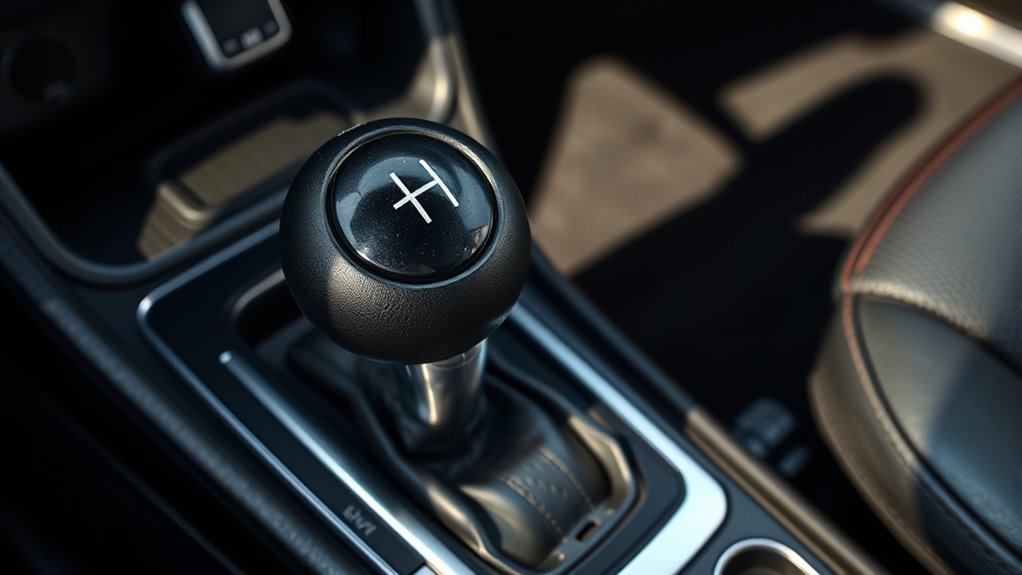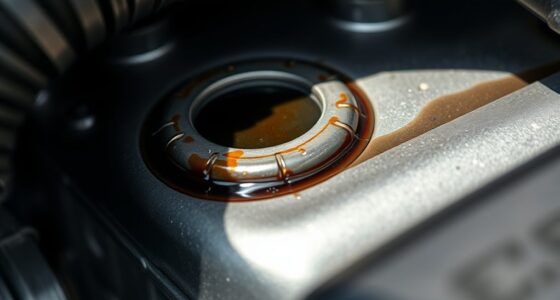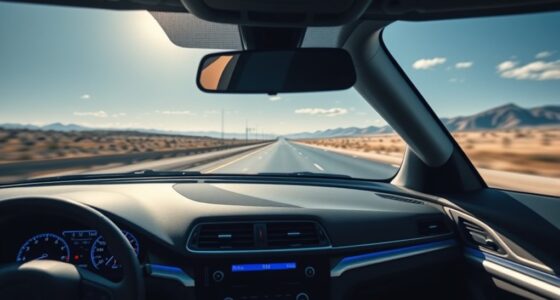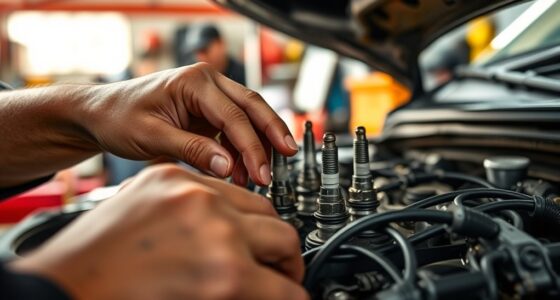Mastering the clutch and manual transmission basics involves understanding how the clutch acts as a bridge between the engine and wheels, allowing you to shift gears smoothly. When you press the clutch pedal, it disengages the engine from the transmission, enabling gear changes without stalling. Proper clutch control and timing are key to smooth acceleration, deceleration, and handling, especially in tricky situations like city driving or hill climbing. Keep going, and you’ll uncover tips to enhance your driving skills further.
Key Takeaways
- The clutch connects and disconnects the engine from the transmission, enabling smooth gear changes.
- Operating the clutch involves pressing, shifting gears, then gradually releasing for smooth engagement.
- Manual transmission vehicles require driver control of gear shifts and clutch engagement for optimal driving.
- Proper clutch use prevents stalling, reduces wear, and prolongs the lifespan of the transmission system.
- Mastering clutch techniques enhances vehicle handling, control, and driving confidence across various conditions.

If you want more control over your vehicle’s performance, understanding the fundamentals of a clutch and manual transmission is essential. When you drive a manual car, gear shifting becomes second nature once you grasp how the clutch operation works. The clutch acts as a bridge between your engine and the wheels, allowing you to smoothly change gears without damaging the transmission. To start, you press the clutch pedal down with your foot, disengaging the engine’s power from the transmission. This action separates the engine from the wheels, giving you the ability to shift gears without stalling or jerking.
Mastering gear shifting involves more than just moving the gear stick; it’s about timing and feel. When you want to accelerate or decelerate, you select the appropriate gear by moving the gear lever into the desired position. During this process, clutch operation is critical. You press the clutch, shift gears, and then slowly release the clutch pedal while simultaneously applying throttle. This coordination ensures a smooth transition, preventing abrupt jerks or stalls. As you become more experienced, you’ll notice that the clutch’s engagement point—the spot where the clutch begins to bite—is key to seamless gear changes.
Understanding how to control clutch operation allows you to maximize your driving experience. For example, when climbing a hill or needing quick acceleration, you might shift into a lower gear to get more torque. Conversely, when cruising at highway speeds, you’ll shift into higher gears for efficiency. The ability to smoothly operate the clutch during gear shifting reduces wear on your vehicle and increases its longevity. It’s also crucial for controlling your vehicle during slow maneuvers, such as parking or navigating tight turns, where precise clutch control helps prevent stalls and ensures safety.
In many ways, mastering clutch operation and gear shifting gives you a deeper connection to your vehicle. Instead of relying on automatic transmissions to do the work, you become more aware of how your car responds to your inputs. This awareness makes driving more engaging and allows you to adapt quickly to different driving conditions. Additionally, understanding the importance of clutch control can help you develop better driving habits that prolong your vehicle’s lifespan. With practice, you’ll develop a sense of how much clutch pedal travel is needed and when to shift gears for peak performance. Ultimately, understanding these basics empowers you to drive confidently, smoothly, and efficiently, making manual transmission driving a rewarding skill to develop.
Frequently Asked Questions
How Often Should I Replace My Clutch?
You should replace your clutch when it shows signs of wear, typically around 50,000 to 100,000 miles, but this depends on your driving habits. The clutch lifespan varies based on how often you shift and traffic conditions. Regularly check for slipping, difficulty shifting, or a spongy pedal. Follow your vehicle’s recommended replacement intervals, and get it inspected if you notice any issues to avoid costly repairs later.
Can I Drive a Manual Car Without a Clutch?
You can’t drive a manual car without a clutch because the clutch pedal is the gateway to smooth gear shifts, like a conductor guiding an orchestra. Without it, you’re forcing the gears to grind against each other, risking damage. Proper clutch pedal usage and regular manual transmission maintenance keep your drive seamless. Skipping this step turns your journey into a chaotic dance, where each shift could lead to costly repairs.
What’s the Difference Between a Single and Dual-Clutch Transmission?
A single-clutch transmission uses one clutch pedal to engage and disengage gears, requiring you to manually operate the clutch pedal and use precise gear shift techniques. In contrast, a dual-clutch transmission has two clutches working together, allowing for faster gear changes without needing a clutch pedal. This setup provides smoother acceleration and deceleration, making driving easier and more efficient, especially in modern cars with automatic-like shifting capabilities.
How Do I Know if My Clutch Is Slipping?
Ever wonder if your clutch is slipping? You’ll notice slipping symptoms like difficulty accelerating, revving sounds without power increase, or the clutch pedal feeling different—maybe it’s worn or feels soft. Check for clutch pedal wear or unusual resistance. If your car struggles to engage gears smoothly or stalls unexpectedly, your clutch might be slipping. Don’t ignore these signs, or you risk further damage and costly repairs.
Are Manual Transmissions More Fuel-Efficient Than Automatics?
Yes, manual transmissions often offer better fuel economy compared to automatics because you control gear shifts directly, allowing for more efficient driving. When you drive a manual, you can optimize your driving efficiency by shifting at the right moments, reducing fuel consumption. However, advancements in automatic transmission technology have narrowed this gap. Overall, if you want maximum fuel economy, a manual transmission can give you an edge, especially in fuel-conscious driving situations.
Conclusion
Now that you understand the basics of clutch and manual transmission, you’re better equipped to handle driving challenges. Remember, mastering these skills takes time and practice, so don’t throw in the towel too soon. Keep at it, and you’ll find that the road becomes less intimidating and more rewarding. Once you get the hang of it, shifting gears will feel like second nature. Stick with it, and you’ll be driving like a pro in no time.









